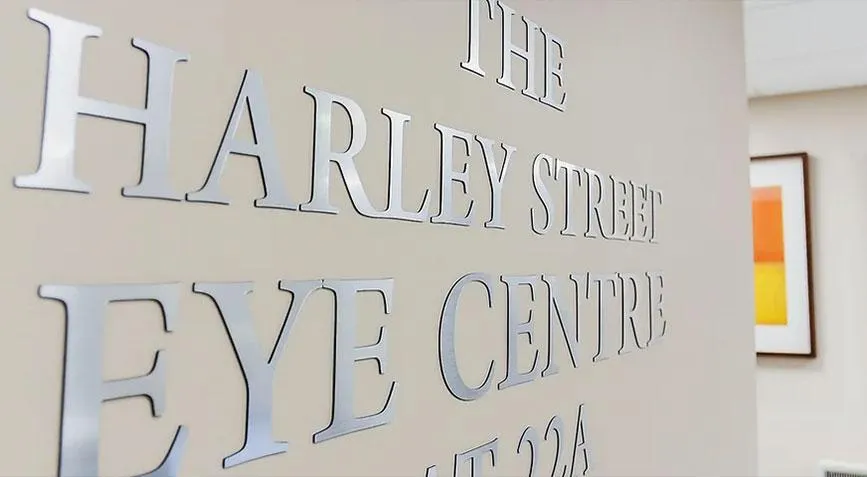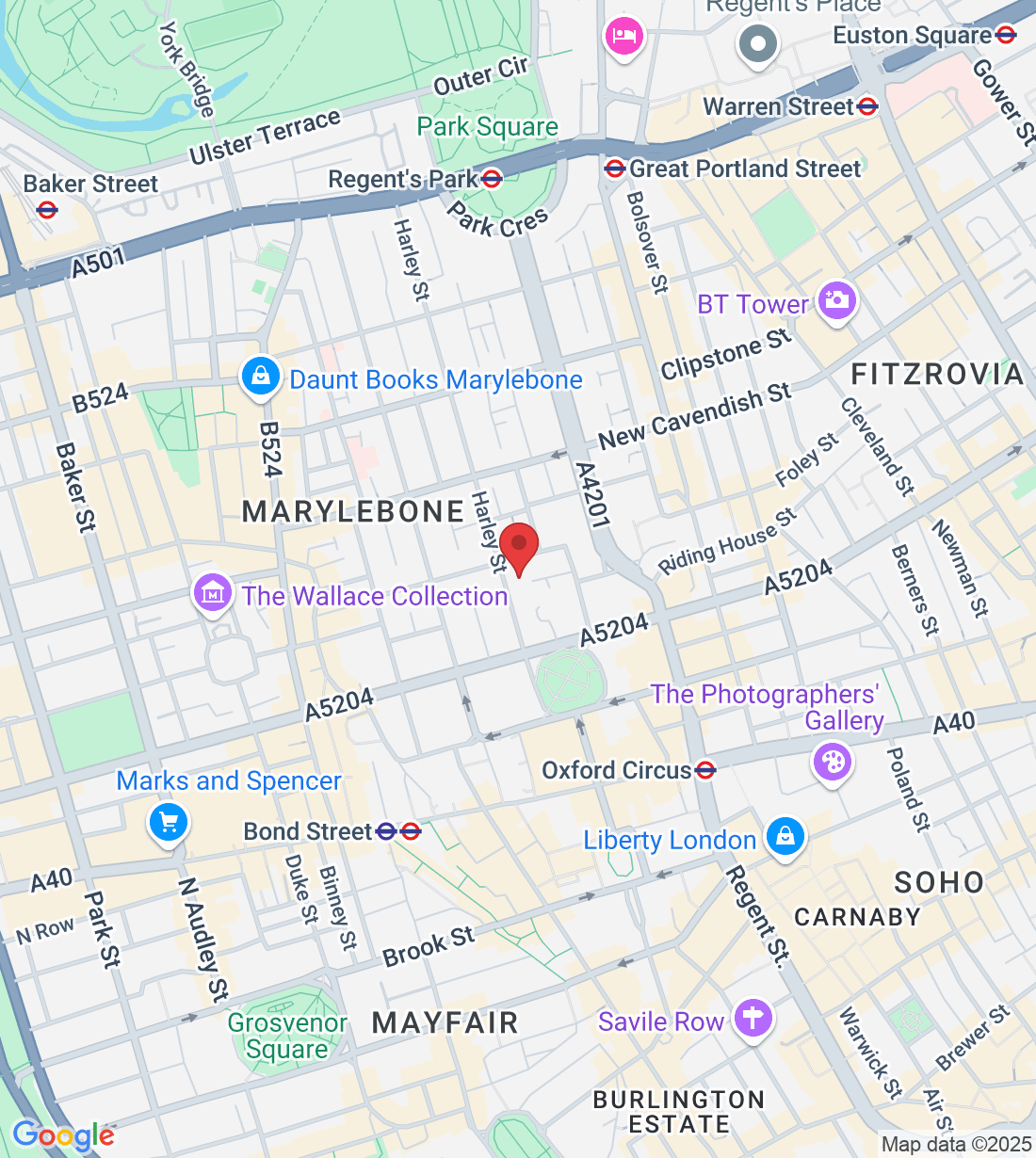
Keratoconus Treatment, Diagnosis, and Surgery
Welcome to the Harley Street Eye Centre, a renowned institution dedicated to providing cutting-edge treatments for keratoconus.
As a progressive eye disorder characterised by the thinning and bulging of the cornea, keratoconus demands specialised care, and our expert team of ophthalmologists is here to guide you through the journey to improved vision.


SINCE 2019, OUR EYE CLINIC HAS TREATED OVER 4,700 PATIENTS WITH ADVANCED EYE CARE.

Download Your FREE Keratoconus Information Pack:
“Everything You Need To Know Before Considering Keratoconus Surgery”
Click the button below to get your FREE information pack
*Downloaded over 2500+ times
Does any of this sound like YOU?
Do you often see halos or ghosting around lights – a common symptom of keratoconus?
Are you needing frequent changes in your glasses or contact lens prescription?
Do you find yourself constantly rubbing your eyes?
Has your NHS doctor only offered contact lenses as your treatment option?
Do you struggle with poor night vision or have increased sensitivity to glare?
Are you experiencing distorted or blurred vision, especially in just one eye?
Do you suffer from eye strain or visual fatigue, especially after tasks that require focus?
Are your contact lenses becoming uncomfortable or difficult to wear?
Have you tried multiple non-surgical treatments without success?

Mr Marwan Ghabra
Clinical Director
It is important to note that these signs are not definitive indicators of keratoconus or the need for surgery. After a thorough eye examination and the appropriate diagnostic tests, a qualified eye care professional at The Harley Street Eye Centre can determine a proper diagnosis and treatment plan, if required.
What is Keratoconus?
Keratoconus is a progressive condition where the collagen fibres within the cornea that give the cornea its shape and structural integrity are gradually thinned, leading to a change in the shape of the cornea from a dome shape to a cone shape, in addition to thinning the cornea. This change in shape of the cornea leads to visual distortion, and your vision may start to resemble this image of a burning candle. If left untreated, a patient may typically need a corneal transplant operation to restore the visual function of the eye


Got a Question?
Ask Mr Ghabra & His Team Of Doctors
Keratoconus Signs and Symptoms
Symptoms and signs usually start around the age of 12-15 years old. If you have been recently diagnosed and you are older than this, it may be the case that you have had keratoconus for a while but it was not diagnosed.
Prior to a diagnosis, patients typically experience the following symptoms:
Vision getting progressively worse year on year with momentary improvements in vision when a new prescription is added to your glasses.
You have changed your glasses at least once a year for the last few years.You see multiple and faded images of the object you are looking at.
Keratoconus can present in both eyes or in one eye at first and the second eye later. While it is considered as a rare disease, with the advent of better awareness and improved imaging of the cornea, keratoconus is not as uncommon as previously thought, and incidence in London and world-wide is rising.
Keratoconus Diagnosis
The Harley Street Eye Centre is a Keratoconus specialist centre with decades of experience in managing patients with Keratoconus in both stopping progression of the condition and also improving vision and quality of life of our patients.
Mr Marwan Ghabra, the Clinical Director heads the Keratoconus service. Mr Ghabra is a Keratoconus specialist, international speaker on the subject and is a co-founder of MAG Optics, a medical device innovation company focusing on novel implants for the vision correction of Keratoconic patients. Furthermore Mr Ghabra is a consultant for Gebauer GmBh in Stuttgart, Germany for the Xenia corneal implant for the restoration of vision and corneal strength in Keratoconic patients.

Treatment of Keratoconus involves 2 main steps.
Step 1: stopping or slowing down of progression of the condition
Step 2: reshaping the cornea to improve and restore functional vision.
Frustrated With Your Eyes? Still Feeling Confused & Not Sure What Do Next?
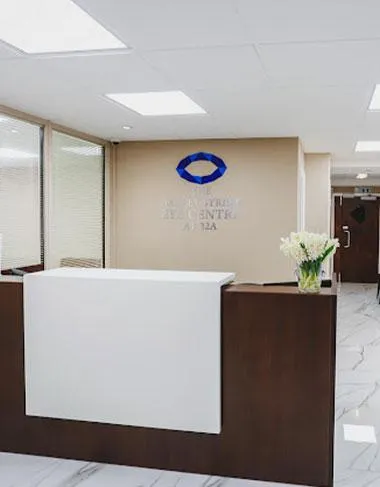
One of our Doctors will call you for FREE and answer any questions or concerns you may have.
Fill in the form to request a call from one of our Doctors
Exploring Treatment Options for Keratoconus
We believe the best treatment is prevention of the disease by early diagnosis for high myope and high astigmatism and seeking laser refractive surgery. Once a diagnosis is made, staging is important to allow for determining progression and if there is any hormonal imbalance.
habit of rubbing eyes, - hay fever, itchiness, dryness,
At The Harley Street Eye Centre, we offer a wide spectrum of advanced treatments for keratoconus, carefully tailored to the stage and severity of your condition. From minimally invasive techniques to vision-enhancing surgical procedures, our goal is to protect your sight and improve your quality of life — including offering The Ghabra Technique, a revolutionary procedure developed here exclusively.
Here's an overview of the most effective treatment options available today:
Xenia Collagen Implant Surgery – The Ghabra Technique
Corneal Crosslinking (CXL)
Topography-Guided Laser Treatment with Corneal Cross-Linking
Intrastromal Ring Segments (ICRS)
Corneal Transplant Surgery
Implantable Collamer Lens (ICL) for Keratoconus
As keratoconus specialists, our treatment approach focuses on two key goals: halting the progression of the disease and improving visual clarity. Depending on the individual case, some treatments can address both aspects simultaneously—offering patients a more comprehensive and efficient path to long-term visual stability.
* Financing Options Available

Download Your FREE Keratoconus Information Pack:
“Everything You Need To Know Before Considering Keratoconus Surgery”
Click the button below to get your FREE information pack
*Downloaded over 2500+ times

Xenia Corneal Implants
Exclusive to The Harley Street Eye Centre, the Ghabra Technique is a pioneering approach to keratoconus surgery that offers a minimally invasive, biomechanically precise alternative to corneal transplants.
Developed by Dr. Marwan Ghabra, this technique uses the Xenia collagen implant—a biocompatible, lenticule-shaped disc or ring segment—designed to restore corneal thickness, improve shape, and correct irregularities in both the front and back surfaces of the cornea. Each Xenia implant is customisable, with its dimensions tailored to match the unique corneal profile of each patient, ensuring a highly personalised and precise treatment outcome.
What makes the Ghabra Technique pioneering is its use of a femtosecond laser to create a deep corneal pocket, allowing for the precise placement of the implant within the deeper layers of the cornea. This approach enables surgeons to directly target posterior corneal irregularities—the very area where the earliest signs of keratoconus typically appear. Previously, addressing this region was only possible through more invasive procedures such as corneal transplant surgery.
The result? A stronger, more symmetrical, and visually optimised cornea, with faster recovery times and improved patient comfort.

Corneal Cross-Linking (CXL)
CXL is the first line of treatment for slowing or stopping keratoconus progression. It works by applying riboflavin drops (vitamin B2) to the cornea, followed by UV light exposure, which increases collagen bonds and stabilises the cornea.
There are two main types of crosslinking:
Standard CXL involves removing the outer layer of the cornea to allow full penetration of the drops.
Accelerated CXL shortens UV exposure time for a faster treatment with similar outcomes.
Both techniques help stabilise vision and can be combined with other treatments for enhanced results.
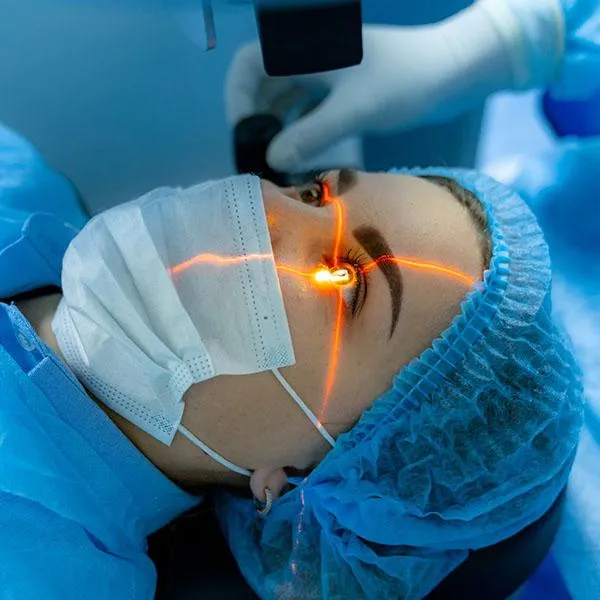
Topo-Guided Laser Eye Surgery
For carefully selected patients, a combined approach using topography-guided laser treatment alongside corneal cross-linking (CXL) can offer both visual rehabilitation and long-term disease stability. The laser component gently reshapes the front surface of the cornea to reduce irregularities and improve vision, while the cross-linking treatment strengthens the corneal structure to halt further progression of keratoconus.
This dual-procedure is particularly valuable in cases where patients have not previously undergone cross-linking, as laser correction alone is not considered safe or effective for keratoconus. When performed together, the result is a more stable, regular corneal surface with reduced dependence on contact lenses and enhanced visual outcomes
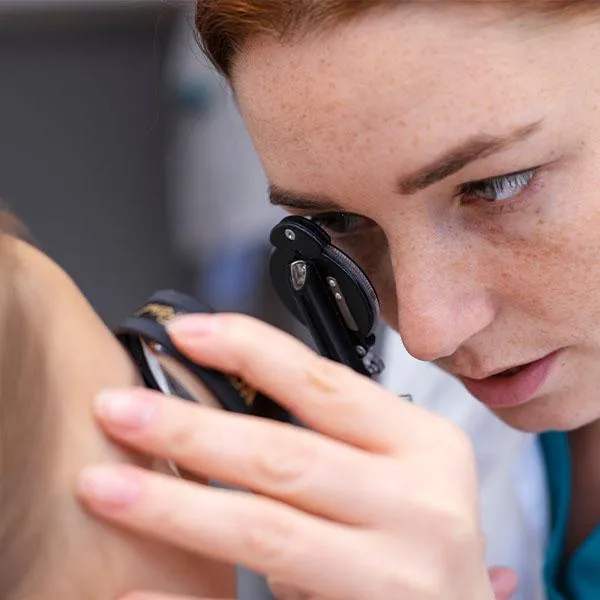
Intrastromal Ring Segments (ICRS)
ICRS are tiny, arc-shaped implants placed within the cornea to flatten and regularise its shape. They work by reducing corneal steepness.
These ring segments are especially useful for patients with moderate to advanced keratoconus who are no longer achieving clear vision with glasses or contacts.
The procedure is minimally invasive, and reversible.
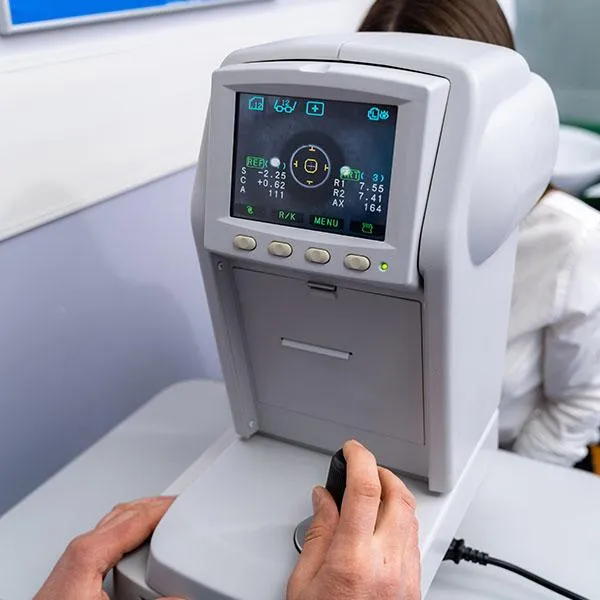
Corneal Transplant Surgery
When the keratoconic cornea becomes too thin, leading to other treatments not being implemented a corneal transplant may be required.
There are two main surgical approaches:
Deep Anterior Lamellar Keratoplasty (DALK): Replaces only the damaged outer layers of the cornea.
Penetrating Keratoplasty (PK): A full-thickness corneal transplant where the entire cornea is replaced with donor tissue.
While highly effective, these procedures involve longer recovery periods and carry a risk of rejection, which is why they are typically reserved for advanced cases. long term monitoring and aftercare. with potential for follow on procedures.

Implantable Collamer Lens (ICL) for Keratoconus
Implantable Collamer Lenses (ICLs) offer a safe and effective solution for improving vision in keratoconus patients, particularly those who are contact lens intolerant or seeking greater visual independence. Unlike standard laser vision correction, ICLs do not alter the shape of the cornea—making them especially suitable for individuals with stable keratoconus.
ICLs are placed inside the eye, behind the iris and in front of the natural lens, to correct refractive errors such as high myopia or astigmatism—common in keratoconus. The procedure is minimally invasive and reversible, offering excellent visual quality, often with sharper contrast and reduced glare.
For keratoconus patients who have already undergone corneal stabilisation through cross-linking or other structural procedures, ICLs can provide an additional layer of visual enhancement. In select cases, they may also be combined with other interventions, such as collagen implants or topography-guided treatments, to deliver a truly customised outcome.

Just 8 Reasons To Choose The Harley Street Eye Centre
Expertise and Experience: - The Harley Street Eye Centre boasts a team of highly skilled and experienced eye specialists who are renowned in their respective fields. They have the knowledge and expertise to provide top-quality eye care and treatment.
State-of-the-Art Facilities: - The clinic is equipped with advanced and cutting-edge technology, ensuring that patients receive the most accurate diagnoses and effective treatments available in the field of ophthalmology.
Comprehensive Eye Care - The Harley Street Eye Centre offers a wide range of eye care services, including routine eye exams, refractive surgery (such as LASIK), cataract surgery, corneal transplants, glaucoma treatment, and more. Patients can receive comprehensive eye care under one roof.
Personalised Treatment Plans - Each patient is unique, and at The Harley Street Eye Centre, the treatment plans are tailored to meet individual needs. The doctors take the time to understand the specific concerns of each patient and develop personalised treatment strategies accordingly.
Strong Reputation - The Harley Street Eye Centre has built a strong reputation over the years due to its commitment to excellence. The clinic has a track record of successful treatments and satisfied patients, which is reflected in positive reviews and testimonials.
Commitment to Excellence - The Harley Street Eye Centre has built a strong reputation over the years due to its commitment to excellence. The clinic has a track record of successful treatments and satisfied patients, which is reflected in positive reviews and testimonials.
Collaborative Approach - The Harley Street Eye Centre is dedicated to providing the highest standard of eye care and treatment. They prioritise patient safety, satisfaction, and long-term visual health, making them a trusted choice for individuals seeking the best eye clinic for their needs.
Continuing Education and Research - The team at The Harley Street Eye Centre remains at the forefront of advancements in ophthalmology through continuous education and involvement in research. This commitment to staying updated with the latest developments ensures that patients receive the best available treatments.
Common Questions About Keratoconus Surgery & Treatments
Is Keratoconus treated on the NHS?
Yes, the NHS does offer treatment for keratoconus, primarily aimed at halting progression in mild to moderate cases—most commonly through corneal cross-linking (CXL). However, the availability of this treatment varies significantly between NHS hospitals, and waiting times can be unpredictable. Vision correction options, especially for more complex cases, may be limited.
According to NICE guidelines, corneal cross-linking should be offered promptly once keratoconus is diagnosed to prevent further deterioration of vision. In private care, patients often benefit from quicker access to treatment, more consistent availability, and advanced technologies tailored not just to stabilise the condition, but to optimise visual outcomes as well.
Can Keratoconus be prevented?
While keratoconus cannot be completely prevented, early diagnosis and proactive care can significantly reduce the risk of progression. Avoiding eye rubbing, managing allergies, and having regular eye exams—particularly if there's a family history—are key steps. Accessing timely treatment, such as corneal cross-linking, can help preserve vision in the long term.
What triggers Keratoconus?
Keratoconus is believed to result from a combination of genetic and environmental factors. Common triggers include a family history of the condition, chronic eye rubbing, allergic eye disease, and certain connective tissue disorders. Managing these risk factors, especially eye rubbing and allergies, plays an important role in slowing progression.
How common is Keratoconus?
The prevalence of keratoconus varies significantly across different regions and populations. While earlier estimates suggested it affected approximately 1 in 2,000 individuals, more recent studies indicate higher rates. For instance, a 2017 study in the United States reported a prevalence of about 1 in 375 individuals. In the Middle East, the condition appears even more common; research from Saudi Arabia found a prevalence of approximately 1 in 21 patients (4.79%), and studies in Lebanon reported rates around 3.3%. These variations may be attributed to genetic, environmental, and methodological factors. Given this variability and the potential for underdiagnosis, especially in early stages, regular eye examinations are crucial for early detection and management.
How serious is Keratoconus?
Keratoconus can vary from mild to severe. In early stages, it may cause only minor vision distortion, but if left untreated, it can lead to significant thinning and irregularity of the cornea. This can result in serious visual impairment and, in some cases, require corneal transplantation. Early diagnosis and modern treatments like corneal cross-linking can dramatically reduce the risk of progression and help preserve quality of life.
Can Keratoconus be corrected?
Although keratoconus cannot be reversed, its effects can be managed very effectively. Vision can often be improved with custom or scleral contact lenses, while progression can be halted with corneal cross-linking. In advanced cases, surgical options like intracorneal ring segments or corneal transplantation may be considered. With personalised treatment, many patients achieve excellent functional vision.
What is the best treatment for Keratoconus?
Treatment for keratoconus generally falls into two main categories: halting disease progression and correcting vision.
To stop progression, the first-line treatment is corneal cross-linking (CXL)—a minimally invasive procedure that strengthens the corneal structure and aims to prevent further deterioration.
For vision correction, a variety of options are available depending on the stage and severity of the condition. These include:
Xenia® collagen corneal implants
Topo-guided laser treatments
Intracorneal ring segments (ICRS)
Specialist contact lenses (such as scleral or hybrid lenses)
Corneal transplantation in advanced cases
In many instances, your ophthalmologist may recommend a combination of treatments from both categories to stabilise the condition while also improving visual function. Private care settings often provide access to the full spectrum of these advanced options, along with highly customised treatment plans tailored to each patient’s unique needs.
Can people with Keratoconus go blind?
Keratoconus very rarely leads to complete blindness. However, if left untreated, it can cause significant visual impairment, especially in both eyes. In the most advanced stages, vision may be severely reduced and no longer correctable with glasses or standard lenses. With today’s treatments—including corneal cross-linking and customised lens options—most patients retain useful vision and lead full, active lives.
At what ages does Keratoconus present and get worse?
Keratoconus typically begins during the teenage years or early 20s. It tends to progress more rapidly in younger individuals and usually stabilises by the mid-to-late 30s. Because progression is often silent in the early stages, early detection and intervention are key to maintaining long-term visual function.
What not to do when you have Keratoconus
Absolutely stop rubbing your eyes. Eye rubbing is strongly linked to the progression of keratoconus and can lead to further corneal thinning and deformation. If your eyes feel itchy or irritated, speak to your eye specialist about treating underlying causes such as allergies or dry eye. Managing these issues can help reduce the urge to rub and protect your corneal health.
Can laser eye surgery fix Keratoconus?
Traditional laser eye surgery procedures like LASIK are not suitable for patients with keratoconus and may worsen the condition. However, some advanced techniques—such as topography-guided PRK combined with corneal cross-linking—may be used in selected cases to improve vision. These specialised treatments are generally available in private clinics with expertise in keratoconus management.
Can I live a normal life with Keratoconus?
Yes, most people with keratoconus can live entirely normal and fulfilling lives. With modern treatment options, vision can often be stabilised and significantly improved. Some lifestyle adjustments may be needed, especially around vision correction, but with good management, many patients continue to drive, work, and enjoy all their usual activities.
What does a person with Keratoconus see?
People with keratoconus often describe their vision as distorted, blurred, or doubled—particularly in low light or at night. This visual disturbance, commonly referred to as "ghosting," causes overlapping or shadowed images, especially around text or lights. Halos, glare, and starbursts around lights are also frequent complaints. These symptoms result from the irregular shape of the cornea affecting how light enters the eye. Early diagnosis and treatment can significantly reduce these effects and help restore clearer, more comfortable vision.

What happens if Keratoconus is left untreated?
If left untreated, keratoconus typically worsens over time—especially in younger patients. As the cornea thins and becomes more irregular, vision deteriorates, and glasses may no longer provide adequate correction. In advanced stages, scarring can develop, and corneal transplantation may become necessary. Early intervention, particularly with corneal cross-linking, can prevent these outcomes and preserve vision.
Can Keratoconus present in one eye or both?
Keratoconus usually affects both eyes, although it often presents asymmetrically—meaning one eye may be more advanced than the other. In rare cases, only one eye shows signs of the disease at first, but the second eye often develops changes over time. Regular monitoring of both eyes is important, even if symptoms seem isolated to one.
Please note that these FAQs are for informational purposes only and should not replace professional medical advice. It is essential to consult with a qualified eye care professional to receive an accurate diagnosis and appropriate treatment recommendations for your specific condition.

Download Your FREE Keratoconus Information Pack:
“Everything You Need To Know Before Considering Keratoconus Surgery”
Click the button below to get your FREE information pack
*Downloaded over 2500+ times
About Harley Street Eye Centre
Located in the heart of Harley Street in London, The Harley Street Eye Centre continues the decades-old association of eye care with 22a Harley Street. This brand new state of the art clinic offers full and comprehensive ophthalmic treatment and imaging. Medical Lead Mr. Marwan Ghabra and his team of leading ophthalmic surgeons and dedicated professionals are committed to providing world-class eye care.
The Harley Street Eye Centre provides the right eye treatment at the right time. Your eyes are precious, and you should take great care of them.
Centre for Complicated Cases
The Harley Street Eye Centre, in addition to providing high-quality eye care locally
in the UK, is quickly becoming well known internationally as a go-to centre for complicated cases needing out of the box thinking with a strong base in currently accepted ophthalmic practice.
When it comes to a routine eye test, a problem with squinting, double vision, loss of vision, a sore eye or unbearable eye pain or complex serious trauma to the eye, our team of experts are best suited to advise, examine and treat your eyes to bring you, improved eye health and peace of mind.

Located in The Heart of Harley Street London, UK
Here at The Harley Street Eye Centre, we have the knowledge and expertise to treat your eyes.
Questions you might be asking asking: where is there an eye specialist near me? Which eye clinic offers the best vision care in London? We're right here.
Located in the heart of Harley Street, near Marylebone in London we have undoubtedly the best solutions backed up by our team of medical experts. A consultation with one of our eye doctors will be your first step towards achieving the best possible outcome for your eyes.
We are not just a clinic, but a technologically advanced eye care facility filled with experts who collectively have decades of experience. A leading Eye Care provider in Harley Street, London, our experienced team of ophthalmologists, opticians and experts will find the best possible solutions all in one place.
The Harley Street Eye Centre continues the decades-old association of eye care with 22a Harley Street. Our brand new state of the art clinic offers full and comprehensive ophthalmic treatment and imaging using the latest technology.
Medical Lead Mr. Marwan Ghabra and his team of leading ophthalmic surgeons and dedicated professionals are committed to providing world-class eye care.

What We Treat
The Harley Street Eye Centre offers a comprehensive range of eye care services, catering to various eye health needs. From routine eye exams to advanced procedures such as refractive surgery (e.g., LASIK), cataract surgery, corneal transplants, and glaucoma treatment.

Corneal Treatment and Surgery
Keratoconus
Cataract Surgery
Lasik Laser Eye Surgery
Pediatric Eye Treatments and Surgery

TransPRK Laser Eye Surgery
Cosmetic Eye Surgery
Dry Eye Treatments
Retinal Surgery and Treatments
Glaucoma Eye Surgery and Treatments
From Consultation to Treatment
What To Expect At Your First Visit With Us
We're excited to see you at your appointment! We want to make sure you feel comfortable and well-informed, so don't hesitate to ask us any questions about our treatments, our office, or even our payment options. Our goal is to help you get back to living your life free of visual impairment, so let's work together to make that happen!
Discuss your eye health goals
Full eye examination
Vision check and treatment eligibility
Diagnostic scans if required
Start a custom treatment plan


"Highly recommend The Harley Street Eye Centre. The team are professional, experienced and educated."
- Subé W
The reviews showcased are authentic feedback from patients who have received treatment at The Harley Street Eye Centre. While individual outcomes may differ, these reviews do not claim to reflect the results of all patients.
Frustrated With Your Eyes? Still Feeling Confused & Not Sure What Do Next?

One of our Doctors will call you for FREE and answer any questions or concerns you may have.
Fill in the form to request a call from one of our Doctors
© Copyright 2023. The Harley Street Eye Centre. All rights reserved.


